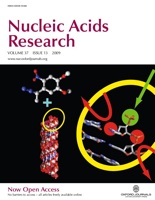the friedman lab:
The Science
the friedman lab:
The Science
Our lab was the first to demonstrate that RNA interference could be brought under the control of light. The purpose of this work is to allow for the spacing, timing and amount of gene expression to be controlled by the spacing, timing and degree of irradiation. Such a method will permit the analysis of biological systems at unprecedented levels and potentially allow for the targeting of pathogenic gene overexpression in space and time. Our work in this area is highly cited and has been featured in Faculty of 1000, in the frontispiece of Angewandte Chemie and on the cover of NAR. We use the techniques of synthesis (e.g. new photolabile groups), analysis (e.g. multi-dimensional MS) and biology (e.g. cell culture).

Light Activated RNA Interference
Our lab has pioneered a new strategy to inhibit the anti-cancer target, telomerase. Telomerase activity is found in a majority of cancer cells and there are mechanistic reasons why cancer cells require it in order to stay viable. We are targeting telomerase by binding to the duplex that forms in its active site. This duplex is ideally situated to access unique telomerase surfaces. Molecules that target this duplex act as platforms to introduce moieties to increase affinity and specificity for telomerase.
Telomerase Inhibition
The “Other Projects” category actually covers quite a bit of territory. Building on our work with telomerase, we are extending the approach to target any therapeutically important polymerase (e.g. reverse transcriptase). We are also examining the role of RNA as a intercellular communication molecule. We are also developing strategies to target arbitrary folded RNA structures.
Other Projects
Insulin Photoactivated Depot
We have created a new way of delivering insulin with minimal invasiveness, by linking insulin to an insoluble polymer via a light cleaved linker. We call this material an insulin Photoactivated Depot (PAD). This material can be injected just under the skin, like normal insulin, and then be irradiated transdermally in response to blood sugar cues to release the insulin. This work was featured on the frontispiece of Angewandte Chemie in 2013.
Click here for further information on the Friedman Lab Insulin Project.
